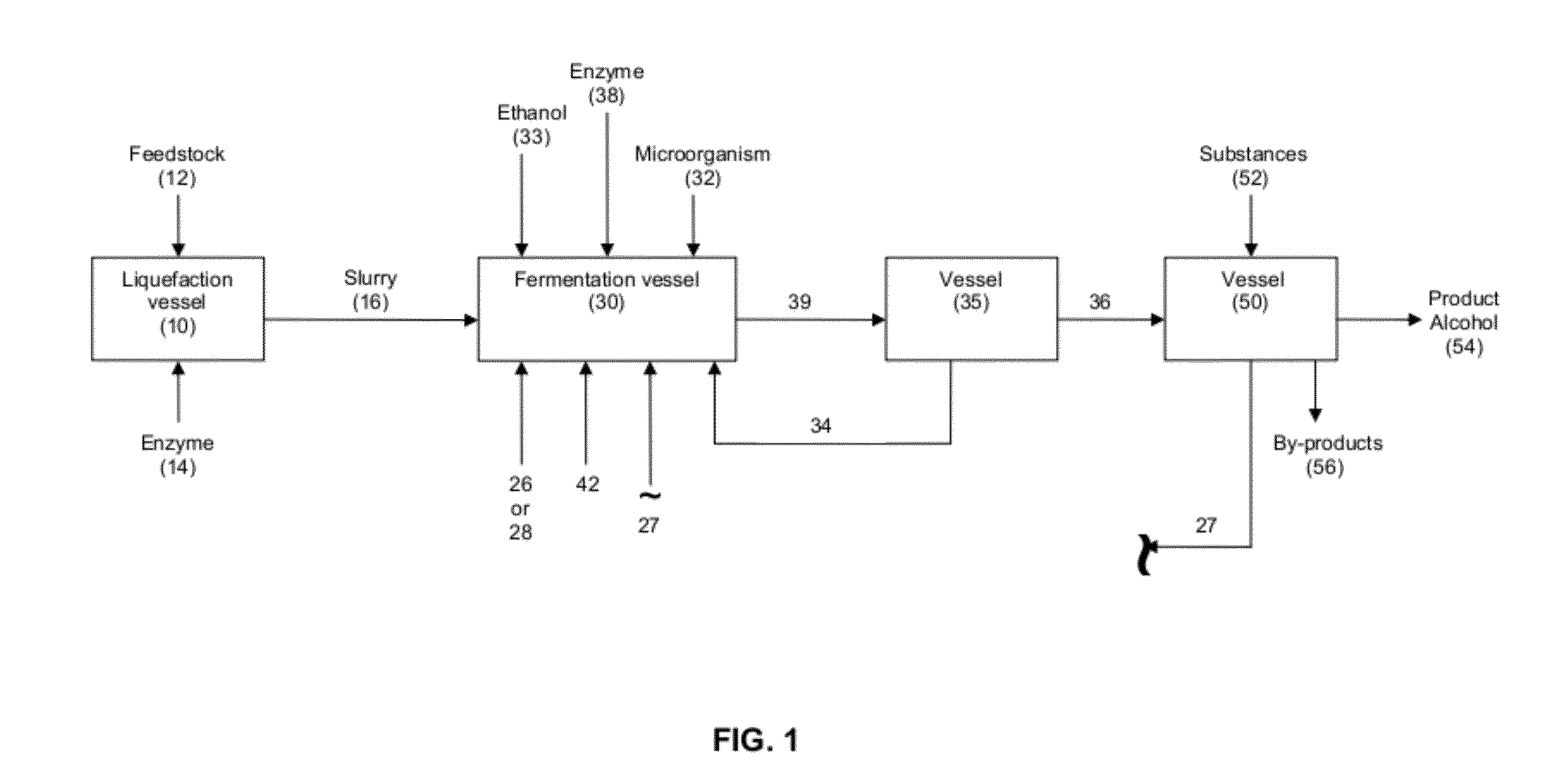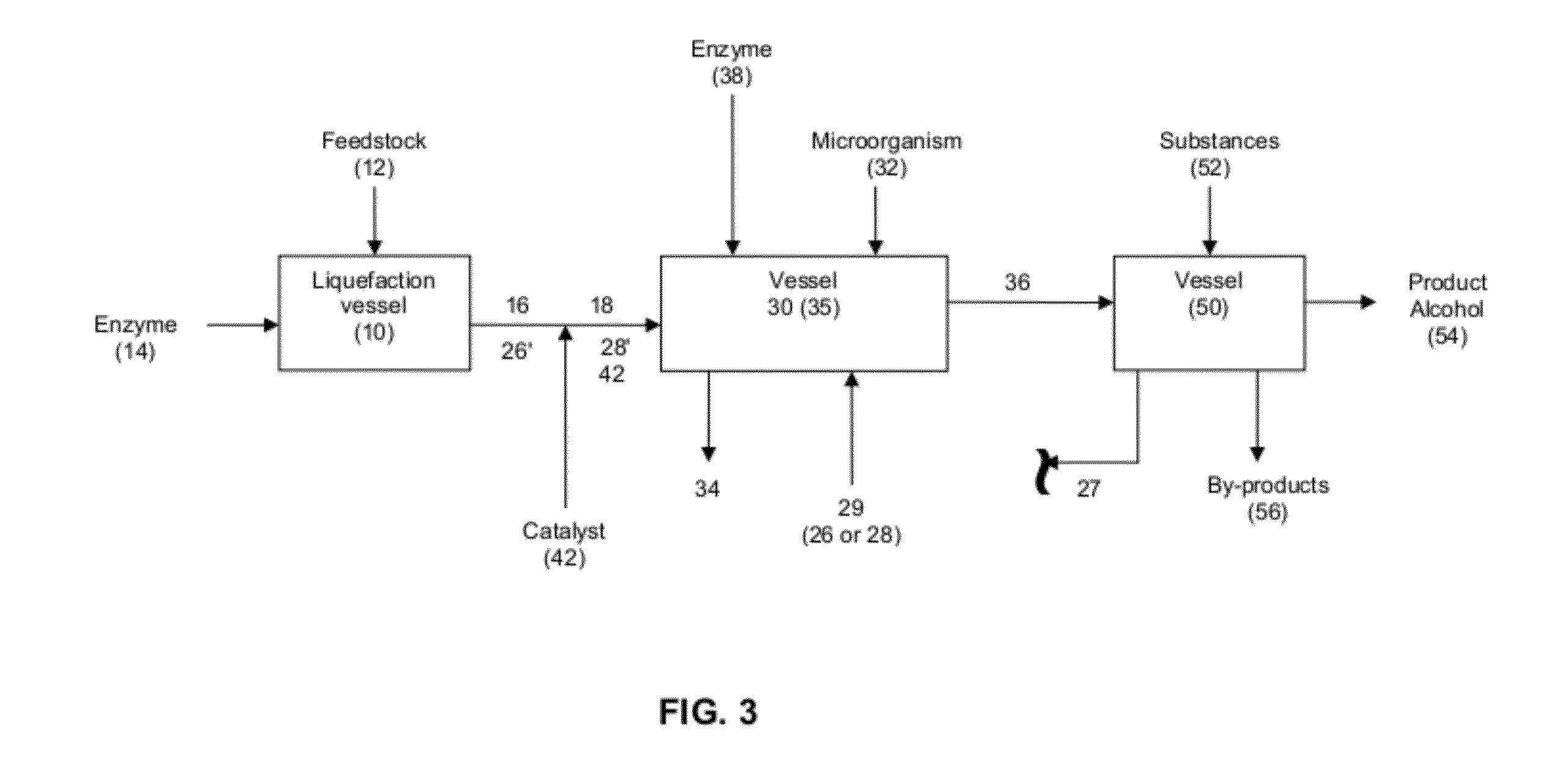Production of alcohol esters and in situ product removal during alcohol fermentation
- Summary
- Abstract
- Description
- Claims
- Application Information
AI Technical Summary
Benefits of technology
Problems solved by technology
Method used
Image
Examples
example 1
Control
[0399]Experiment identifier 2010Y014 included: Seed Flask Growth method, Initial Fermentation Vessel Preparation method, Liquefaction method, Nutrient Addition Prior to Inoculation method, Fermentation Vessel Inoculation method, Fermentation Vessel Operating Conditions method, and all of the Analytical methods. Oleyl alcohol was added in a single batch between 0.1-1.0 hr after inoculation. The butanologen was NGCI-070.
example 2
[0400]Experiment identifier 2010Y015 included: Seed Flask Growth method, Initial Fermentation Vessel Preparation method, Liquefaction method, Lipase Treatment Post-Liquefaction method, Nutrient Addition Prior to Inoculation method, Fermentation Vessel Inoculation method, Fermentation Vessel Operating Conditions method, and all of the Analytical methods. Oleyl alcohol was added in a single batch between 0.1-1.0 hr after inoculation. The butanologen was NGCI-070.
example 3
[0401]Experiment identifier 2010Y016 included: Seed Flask Growth method, Initial Fermentation Vessel Preparation method, Liquefaction method, Lipase Treatment Post-Liquefaction method, Nutrient Addition Prior to Inoculation method with the exception of the exclusion of ethanol, Fermentation Vessel Inoculation method, Fermentation Vessel Operating Conditions method, and all of the Analytical methods. Oleyl alcohol was added in a single batch between 0.1-1.0 hr after inoculation. The butanologen was NGCI-070.
PUM
| Property | Measurement | Unit |
|---|---|---|
| Temperature | aaaaa | aaaaa |
| Temperature | aaaaa | aaaaa |
| Temperature | aaaaa | aaaaa |
Abstract
Description
Claims
Application Information
 Login to View More
Login to View More - R&D
- Intellectual Property
- Life Sciences
- Materials
- Tech Scout
- Unparalleled Data Quality
- Higher Quality Content
- 60% Fewer Hallucinations
Browse by: Latest US Patents, China's latest patents, Technical Efficacy Thesaurus, Application Domain, Technology Topic, Popular Technical Reports.
© 2025 PatSnap. All rights reserved.Legal|Privacy policy|Modern Slavery Act Transparency Statement|Sitemap|About US| Contact US: help@patsnap.com



